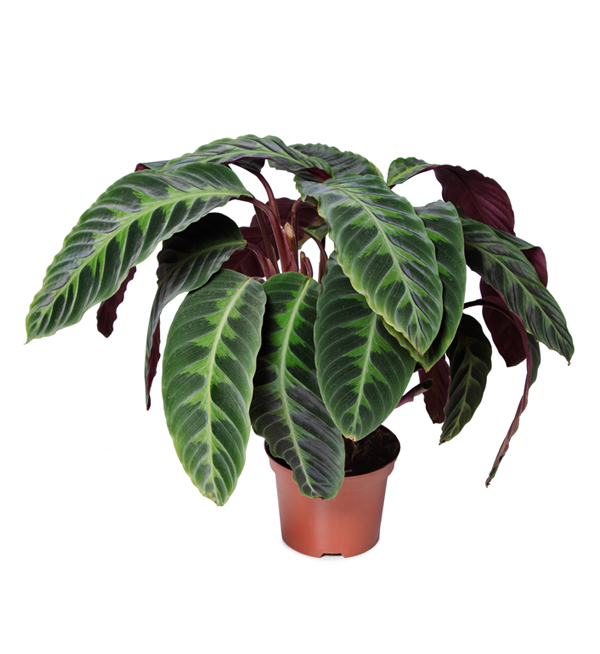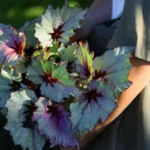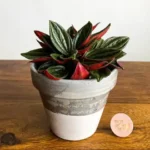Meet the Majestic Calathea warscewiczii
Among the dazzling assortment of indoor tropical plants, few can match the velvety charm and striking foliage of Calathea warscewiczii. Known for its lush, lance-shaped leaves with deep green topside patterns and a rich burgundy hue underneath, this plant is a favorite among houseplant collectors and beginners alike. Native to the rainforests of Central America, this species thrives in warm, humid environments and adds a touch of the exotic to any indoor space. Learning how to care for Calathea warscewiczii can feel like unlocking the secrets of the jungle — but with the right guidance, it’s easier than you think.
Understanding Calathea warscewiczii’s Growth Habits
Often referred to as a “prayer plant” due to its nightly leaf movements, Calathea warscewiczii belongs to the Marantaceae family. This plant can grow up to 3 feet tall and wide under optimal indoor conditions, making it a showy but manageable plant. Its soft, velvety texture is one of its signature features, and it naturally grows in the shaded understory of forests. This gives us a clue about its ideal indoor setting: indirect light, consistent moisture, and high humidity.
Key Physical Features
- Foliage: Elongated, pointed leaves with light and dark green patterns on top, and maroon-purple undersides.
- Texture: Leaves have a velvety or suede-like feel.
- Growth style: Upright and slightly bushy; ideal as a floor or tabletop plant.
Light and Placement Tips
One of the most common questions among new owners is: “How much light does it need?” Since Calathea warscewiczii originates from forest floors, it prefers low to medium indirect light. Direct sun can scorch its leaves, while too little light will dull its vibrant patterns.
Best Lighting Practices
- Place near a north- or east-facing window with filtered light.
- If using a west or south-facing window, use sheer curtains to soften direct light.
- Avoid placing it directly under grow lights for prolonged periods without moisture monitoring.
TIP: Yellowing leaves often signal too much light, while leggy growth or faded patterns mean the plant needs a bit more illumination.
Watering and Humidity Needs
Watering a Calathea warscewiczii is about balance. It’s sensitive to both overwatering and underwatering, and reacts poorly to minerals in hard water. The key is consistency and quality.
Watering Guidelines
- Keep soil evenly moist but not soggy.
- Use distilled, filtered, or rainwater if possible to avoid fluoride and chlorine damage.
- Allow the top inch of soil to dry between waterings.
- Decrease watering frequency slightly during winter months when the plant’s growth slows.
Humidity Requirements
This plant thrives in high humidity, ideally between 50% to 70%. If your home is dry, especially in winter, there are simple ways to boost humidity:
- Use a room humidifier nearby.
- Group plants together to create a microclimate.
- Place on a pebble tray with water, ensuring the pot sits above the water level.
- Regularly mist (with caution) or use a humidity dome in very dry conditions.
Soil and Potting Guidelines
The soil should allow moisture retention while also preventing root rot. An airy, well-draining mix mimics the loose-rich rainforest floor where this plant naturally thrives.
Recommended Soil Blend
- 2 parts peat moss or coco coir
- 1 part perlite for aeration
- 1 part orchid bark or composted leaf mold
A pot with drainage holes is non-negotiable. Ensure the vessel allows excess water to escape easily to avoid soggy roots.
Fertilizer and Feeding Schedule
Feeding your Calathea warscewiczii promotes healthy foliage and consistent growth. However, too much fertilizer can result in leaf burn or a salt build-up in the soil.
Fertilizing Tips
- Use a diluted (half-strength) balanced liquid fertilizer every 4–6 weeks during the growing season (spring and summer).
- Look for formulas with balanced N-P-K ratios, such as 10-10-10 or 20-20-20.
- Pause feeding in autumn and winter when growth naturally slows.
Occasionally flush the soil with water to minimize salt buildup from fertilizers, especially if you notice leaf edges turning brown.
Common Issues and How to Fix Them
Calathea warscewiczii is not difficult to care for, but it is sensitive to environmental changes. Staying ahead by recognizing symptoms early is key to keeping your plant happy.
Leaf Curling
Cause: Underwatering or low humidity.
Fix: Check soil moisture, increase humidity, and adjust watering frequency.
Brown Tips or Edges
Cause: Dry air, inconsistent watering, or mineral build-up.
Fix: Improve humidity, use distilled water, and maintain even soil moisture.
Pale or Washed-out Leaves
Cause: Too much direct light or nutrient deficiency.
Fix: Move plant to lower-light location and consider fertilization if during growing season.
Pests
Calatheas can occasionally attract pests like spider mites or mealybugs. To manage infestations:
- Wipe leaves gently with a damp cloth.
- Use insecticidal soap or neem oil weekly until the problem clears.
- Increase humidity to deter spider mites, which prefer dry environments.
Propagation and Repotting
While Calathea warscewiczii cannot be propagated from leaf cuttings like some houseplants, it can be propagated through division.
How to Propagate by Division
- Wait until spring or early summer when the plant is actively growing.
- Gently remove the plant from its pot and separate clusters of stems and roots.
- Replant each section into its own pot with fresh soil.
- Water lightly and keep in a warm, humid area during the recovery period.
Repotting every 1 to 2 years is enough to keep the plant healthy. Signs your Calathea may need repotting:
- Roots are visible through drainage holes.
- Water runs through the pot too quickly.
- Growth has slowed significantly, and soil is compacted.
Final Thoughts: Rewarding Beauty with Routine Care
Calathea warscewiczii is a stunning tropical houseplant that brings warmth and character to any indoor plant collection. Its care does demand attention to its environment — especially watering and humidity — but the reward is immeasurable. As you fine-tune your care routine and learn to “listen” to this expressive plant, it will respond with vigorous growth and dazzling foliage that enhances your living space.
For plant lovers who enjoy nurturing and observing their leafy companions, this velvety Calathea will become a cherished member of your indoor garden.
References
- Campos, A. F., & Costa, C. T. (2020). Care Manual for Tropical Indoor Plants. Urban Horticulture Publishing.
- Hessayon, D. G. (2015). The House Plant Expert (Rev. ed.). Expert Books.
- National Gardening Association. (2023). Calathea Plant Care. Retrieved from https://garden.org/plants/view/Calathea-warscewiczii








